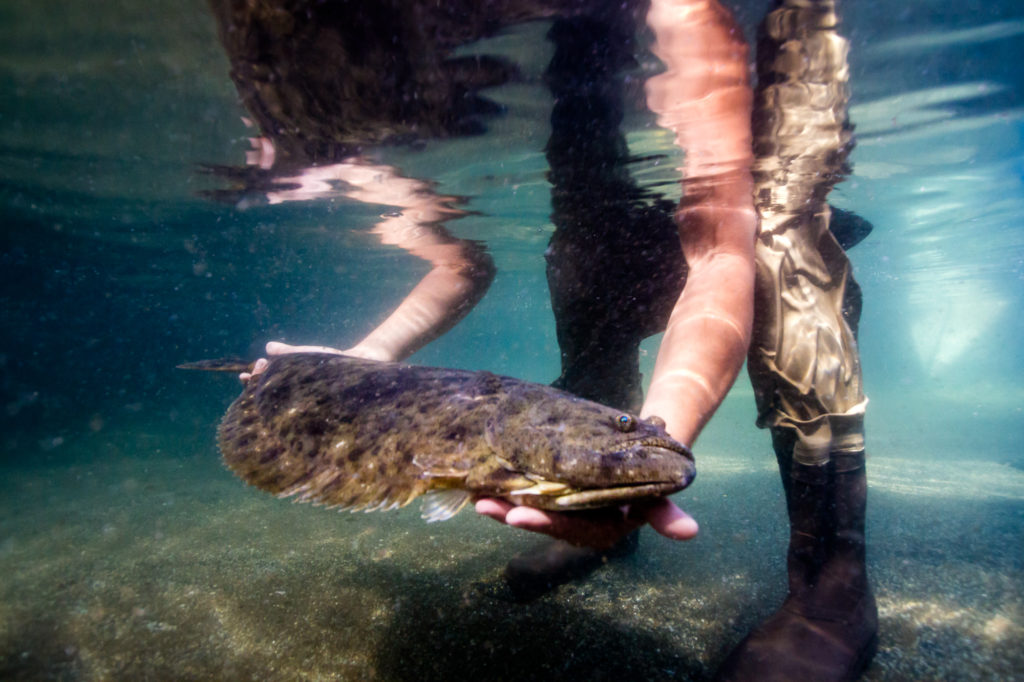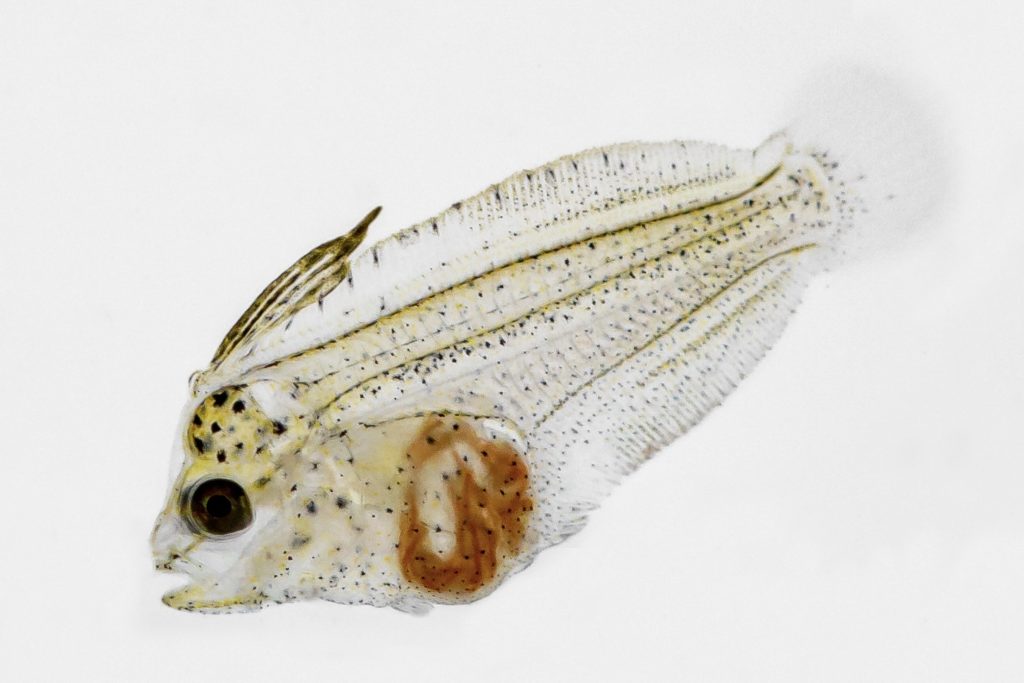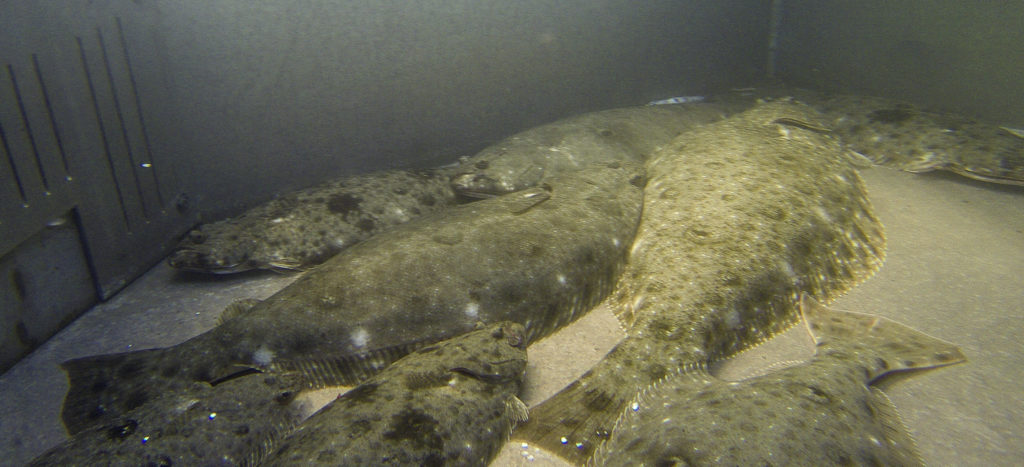
Depleted California halibut stocks get a boost from angler/scientist partnership.
By Ruairi MacNamara
TIDE
July/Aug 2021
Hubbs-SeaWorld Research Institute (HSWRI), a non-profit scientific research organization, has been releasing white seabass in coastal waters of southern California for over three decades. Tens of thousands of juvenile seabass are grown to about four inches in length at the HSWRI marine finfish hatchery in Carlsbad. What makes this endeavor unique among other stocking programs is the grow-out of seabass for several months in volunteer-run net pens before release. This gives the young fish a chance to grow larger (to eight inches or more) and experience prevailing conditions at the release site, which helps to improve their survival once released into the wild.
CCA California is integral to this angler–scientist partnership, with many of its members providing the almost 5,000 hours of volunteer time needed annually to care for the seabass in net pens stretching from San Diego to Channel Islands Harbor.
There has been a push in recent years to use HSWRI’s fish culture experience to replenish another highly prized local species – California halibut. Thanks to funding from Chevron Corporation and several individual donors, a program focusing on California halibut was formalized as the Dick Laub Fisheries Replenishment Program in memory of local San Diego angler and philanthropist, Dick Laub. The CCA California and HSWRI partnership, cultivated over many years with white seabass, has once again been invaluable in getting this initiative to a point where experimental releases of California halibut can happen.

Despite the name, California halibut are a closer relative of the summer and southern flounder than the much larger ‘true’ Pacific halibut found further north. California halibut are an important part of the fish fauna in southern California and are targeted by a dedicated following of anglers, including at several derbies and tournaments in the region. Two stock assessments in the past decade indicate that California halibut in the southern part of the state (from around Pt. Conception to the Mexican border) are depleted to a fraction of their unfished population. This has prompted HSWRI to focus on developing the capacity and techniques necessary to culture California halibut for replenishment.
The process began in 2015 with the upgrade of the fish rearing infrastructure at HSWRI’s research facility on the shores of Mission Bay in San Diego. First was the installation of large tanks and an array of life support equipment, from filtration to temperature control, to hold the captive breeders. These fish, called broodstock, are the cornerstone of any fish hatchery; having sufficient numbers of healthy individuals of both sexes is key to successful breeding. HSWRI has maintained California halibut on and off since the 1990s, but this new program required a concerted effort to substantially boost the broodstock population. Using a similar collection approach developed for white seabass broodstock involving hook and line angling, CCA California members have donated their time, boats and angling knowledge on several occasions to help catch more than 50 adult California halibut that have since become part of the program.
All the broodstock fish undergo a period of quarantine before being divided into groups based on where they were caught. Only adults from the same area where offspring are intended to be released are used as broodstock, which is just one of the measures to maintain the genetic integrity of the wild stock. Once acclimated, and subsequently triggered by seawater that is kept around 64 degrees, California halibut broodstock spawn prolifically. The primary breeding group of just 10–12 fish produce millions of eggs per week during a spawning season that can last several months.
It is this reliable source of eggs that has allowed HSWRI scientists to undertake the research and development necessary to understand how to culture the species. In the past few years, the program has gone full circle – offspring spawned from broodstock collected by CCA California have been released back into San Diego waters. Many of the volunteers who collected the broodstock were on hand with their boats to help deliver coolers loaded with tagged juveniles to the release sites. And while initial releases have been modest in scale at a thousand or two California halibut each time, the size of the fish being released, as with white seabass, is several times larger than typically done with similar species in stocking programs in Texas and elsewhere.
Of course, this tactic will be refined with experiments over time to determine what size at release works best, and as with any program of this nature, there are many other challenges to be addressed. A major priority with any stocked species is ensuring that cultured individuals are as wild-like as possible, both in behavior and appearance. Among flatfishes, irregular pigmentation patterns are common in an aquaculture setting. Recent nutritional experiments at HSWRI focusing on the zooplankton and crustacean live feeds given to larval California halibut have led to improvements in pigmentation rate, and further work is planned in an effort to eliminate this issue entirely.
Another major research question with this species is understanding how stressors like crowding, and water temperature during early development can influence sex. Preliminary results, supported by evidence from related flounders, suggest that masculinization may occur under certain suboptimal conditions. Having control over sex determination is crucial for the sex ratios of released juvenile cohorts to be ecologically appropriate, especially in a species like California halibut that exhibit markedly different male and female growth patterns (females grow faster and larger).
Culture research such as this also has important applications beyond stocking, as a tool to study the impacts of climate change on fish by allowing scientists to mimic natural conditions in controlled experiments, something that can otherwise be very challenging and costly to undertake in the wild.
Scaling up the California halibut program over the coming years has plenty of biological and regulatory hurdles, but this angler–scientist partnership has shown what can be achieved in just a few short years and is yet another example of the important contributions being made by groups like CCA California and HSWRI to replenish fisheries resources in southern California. To support HSWRI’s fisheries replenishment work, visit www.hswri.org/donate.
Ruairi MacNamara is a graduate of the National University of Ireland Galway, holding a B.S. in Marine Science and a Ph.D. in Fisheries Ecology. He is currently the Stock Enhancement Research Coordinator at Hubbs-SeaWorld Research Institute, where he works on both the Ocean Resources Enhancement and Hatchery Program, HSWRI’s long-standing white seabass conservation effort, and a parallel initiative called the Dick Laub Fisheries Replenishment Program aimed at restoring other marine finfish species like California halibut.

These fish, called broodstock, are the cornerstone of any fish hatchery; having sufficient numbers of healthy individuals of both sexes is key to successful breeding.








